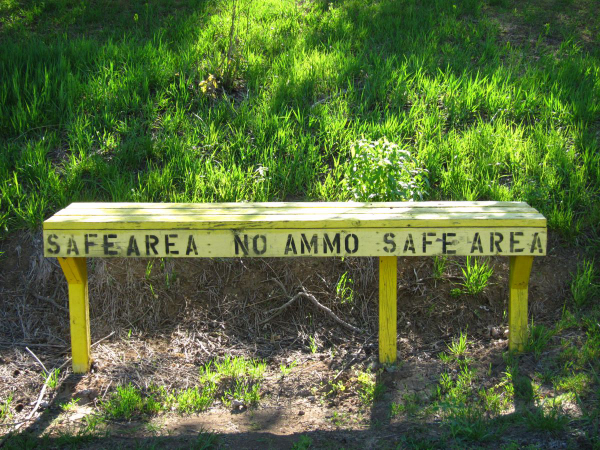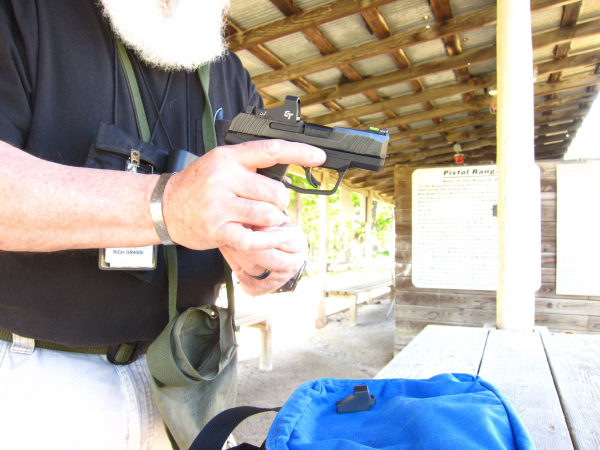Firearms Safety Function and Check
Recently, I posted a consumer safety bulletin on a popular sidearm, the Ruger-57 pistol. As part of the notification, the release said “Ruger is asking owners of Ruger-57 pistols to perform a routine function check of the safety lever to ensure its proper operation …”
I had an interesting conversation with a Ruger executive who noted that it might be helpful to explain to folks how to do a safety and function check of a firearm. That’s true and it begins with some notions that should be obvious.

First, mechanical safety features of guns – and other machinery – do not obviate the need for caution and good sense. A recall of THE RULES never hurts and it applies when running diagnostics on small arms.
All guns are always loaded. In the Ruger-57 example, the recommendation was “magazine out, lock the slide open – look inside then feel for an unextracted round.” If you didn’t find anything, take a breath, lock the gun open and check again. Having loaded ammo around that fits the gun under examination at this point is not required. In fact, it’s a bad idea. You don’t have to unload the Ruger LCR in your pocket, but the ammo for it won’t fit the Ruger-57 anyway.

When checking the gun for ammunition, do not allow the muzzle to cover anything you don’t want to destroy. You aren’t at the range where we have the neat “NO ammo!” safety table and convenient backstop? There are portable “Safe Directions” to be had, plus you may have a bookshelf full of books – use the length of the bookshelf to direct the muzzle; don’t aim in at one book on its spine. You may be in a basement surrounded by concrete walls or have a convenient fireplace.
Regardless, find a safe direction for the muzzle.
Then keep your finger off the trigger until such time as it’s necessary to complete the safety and function check. When you do need to touch the trigger, reconfirm the safe muzzle direction and ensure no one has wandered in front of the muzzle.
Just common sense? It may just be me, but ‘common sense’ apparently isn’t … common.


What is a safety and function check? It’s making sure that the critical functions of the piece are in operational condition and doesn’t include test firing. That’s a separate test. This one comes first. If the gun is, say, a Ruger MAX-9, it may have a thumb safety.
Lock the slide open, practicing good muzzle discipline. Check chamber and magazine. Rack the slide several times. Lock an empty magazine into the gun and rack the slide open. If it locks open on an empty magazine, that means the magazine and slide stop have passed inspection. Remove the magazine.
Close the slide, put the thumb safety (if so equipped) “ON.” Point in at your safe direction, press the trigger. If the gun doesn’t “fire,” the thumb safety has passed. While the gun is still in a safe direction, press the safety down and press the trigger. The trigger should move to the rear and the striker released, causing a “click.”
Keeping the trigger pressed, cycle the slide then release your hold on the trigger. It should reset. Now touching the trigger without touching the trigger safety tab, you can see if the trigger safety tab prevents movement of the trigger when the tab isn’t depressed.

If the trigger moves to the rear and drops the striker when the trigger safety tab isn’t touched, that’s a problem. If the trigger remains in place and the tab keeps it in place, you’ve completed the safety and function check.
Different firearms designs have different (though similar) function and safety checks. A good many manufacturers have this information in instruction manuals, online in text and video forms. Plan on seeking that information out when you buy or trade into a firearm.
Follow THE RULES and the safety function checks will be uneventful. If you find a problem, congratulations! It became apparent when you tested it and not when you needed the gun to work.
— Rich Grassi






